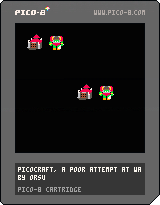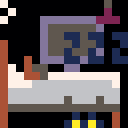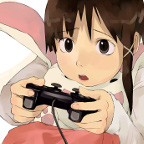
Post the code or upload the cart. (Edit your original post and put it in there.)
Some guesses:
- Possibly you have a cls() statement after your spr() or sspr() statement.
- Possibly you've written a spr() or sspr() command in a loop you have created, and not either put it in the _draw() function, nor alternatively used flip() to send it from the buffer to the screen.
- Possibly you have omitted the underscore from before the _draw() function.
- Possibly you have used sspr() but got the sprite sheet coordinates wrong.
But really it could be a number of other things - without seeing the code it's hard to say.
Here is more detail regarding some of my guesses above; hopefully these details are more useful to a beginner:
Here is a link to the manual online.
Perhaps the first thing to grasp with pico-8 is that it has a game loop, consisting of the functions _update() and _draw(). (See Program Structure in the manual.) This constitutes a frame, and normally happens 30 times a second (or thereabouts).
In the game loop _update() runs before _draw().
Nothing is actually drawn until the end of the _draw() function. Instead a buffer is used. This allows a smooth "instant" update of the entire screen, rather than it having bits of it being drawn at noticeably different moments.
This means that if a cls() happens in either _update() or _draw() in an iteration of the game loop, then anything before that moment won't be displayed when the program does the actual draw at the end of the frame (at the end of the _draw() function).
An alternative to using the game loop is to set up your own (infinite) loop and use the flip() command to flip the screen buffer to the screen memory.
And if neither the _update() or _draw() function is used, and no flip() command is given, then when the progam exits (according to the wiki) the screen will be updated (presuming it exits in its natural course of execution, I guess).
See also:

The immediately obvious thing is that you're missing the underscore from in front of _draw().

Hello! i didn't knew what was the best thing to do, so i just updated this.
I manage to fix my problem, but i now foresee i'm going to run into huge problems with my (non existant) animation system; is there one that's a standard or is brain hurty a normal animations thing ?
thank!

No, there isn't really a standard. Basic animation isn't too hard, though; you just need a number that cycles over a range, updating once per frame. Here's a pretty minimal example:
anim={
frame_time=8,
frames={ 1, 3, 1, 5 } -- tile numbers
}
frame=1
counter=1
function _update()
counter+=1
if counter>anim.frame_time then
counter=1
frame+=1
if frame>#anim.frames then
frame=1
end
end
end
function _draw()
cls()
spr(anim.frames[frame], 72, 72, 2, 2)
end
|
You'd need a table of different animations and to track frame data per actor, of course, but something along those lines will get you pretty far.
Background animation isn't too much harder. You need to modify the map rather than draw a sprite, so you need to keep track of which tiles need updated, but that's just another simple table.
[Please log in to post a comment]








